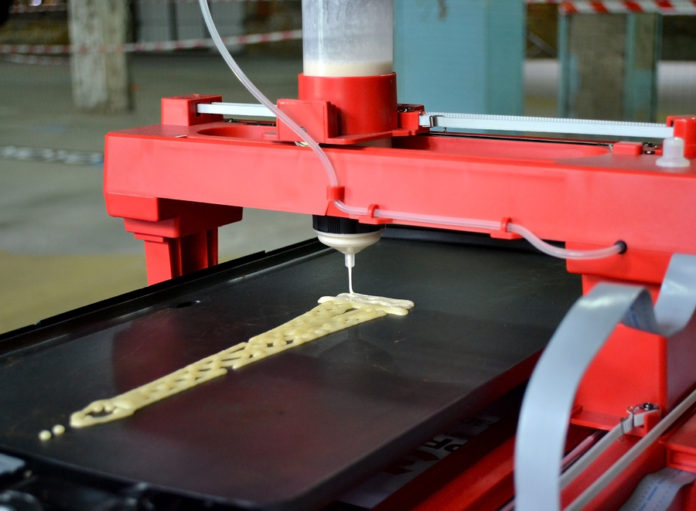
The desire for customization is one of the biggest trends making waves in the food industry, especially among younger generations. Millennials love to DIY, which is driving growth in prepared foods and leading restaurants to offer customizable options. Gen Z sees food less as fuel and more as an expression of their identity. And personalized nutrition (i.e., a diet based on your DNA) is starting to gain traction.
Could 3D printing technology someday provide the ultimate solution for food customization?
According to research by Jin-Kyu Rhee at South Korea’s Ewha Womans University, the answer might be yes. As reported by ScienceDaily, Rhee and colleagues have developed a 3D food printing technology “to create food microstructures that allow food texture and body absorption to be customized on a personal level.”
On a highly simplified level, the technology works by first turning food materials into powders and then using 3D printing to turn those powders into customized food products. “We think that one day, people could have cartridges that contain powdered versions of various ingredients that would be put together using 3-D printing and cooked according to the user’s needs or preferences,” Rhee says.
In addition to providing customized food, the technology could also help reduce food waste as well as storage and transportation costs.
Over the past few years, the idea of 3D printed food has become less far-fetched. Several technologies are in development, though none are yet widely available.
For example, the Foodini, by Natural Machines, is a “mini food manufacturing plant” that can print both sweet and savory foods using fresh ingredients. It’s currently available for professional kitchens, but the plan is to target consumers as well. And last year, BeeHex, a 3D pizza printer developed for NASA, got a big boost thanks to investment from Donatos Pizza and Jim Grote of Grote Company.
What’s different about Rhee’s technology is that it doesn’t use fresh ingredients, but rather powders, which have a longer shelf life, as well as that it’s aimed at the consumer market. If Rhee’s technology is successful, it could open up a whole new market for food manufacturers and their suppliers — providing the cartridges to feed the machines.







